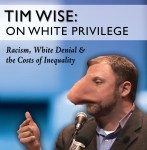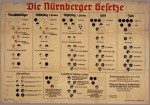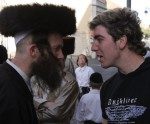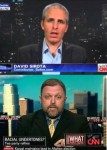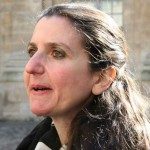 Analysis of an elementary and potent aspect of jewish identity and crypsis.
Analysis of an elementary and potent aspect of jewish identity and crypsis.
The film Gentleman’s Agreement portrayed the change from White to jew as requiring just two elements: a change in name, and telling people you’re a jew. That’s closer to the truth for the reverse, when jews pose as White, many times it’s as simple as changing names and NOT telling anyone they’re a jew.
Jews are well known for changing names in order to pass, a deception and disguise which benefits them, enabling them to better manipulate the opinions and perceptions of others.
The Gentle Art of Changing Jewish Names, from THE DEARBORN INDEPENDENT, issue of 12 November 1921:
Prior to the nineteenth century the Jews resident in Germany did not use family names. It was “Joseph the son of Jacob,” “Isaac ben Abraham,” the son being designated as the son of his father. But the Napoleonic era, especially following upon the assembly of the Great Sanhedrin under Napoleon’s command, caused a distinct change in Jewish customs in Europe.
In 1808 Napoleon sent out a decree commanding all Jews to adopt family names. In Austria a list of surnames was assigned to the Jews, and if a Jew was unable to choose, the state chose for him. The names were devised from precious stones, as Rubenstein; precious metals, such as Goldstein, Silberberg; plants, trees, and animals, such as Mandelbaum, Lilienthal, Ochs, Wolf, and Loewe.
The German Jews created surnames by the simple method of affixing the syllable “son” to the father’s name, thus making Jacobson, Isaacson; while others adopted the names of the localities in which they lived, the Jew resident in Berlin becoming Berliner, and the Jew resident in Oppenheim becoming Oppenheimer.
The Jewish habit of changing names is responsible for the immense camouflage that has concealed the true character of Russian events. When Leon Bronstein becomes Leo Trotsky, and when the Jewish Apfelbaum becomes the “Russian” Zinoviev; and when the Jewish Cohen becomes the “Russian” Volodarsky, and so on down through the list of the controllers of Russia—Goldman becoming Izgoev, and Feldman becoming Vladimirov—it is a little difficult for people who think that names do not lie, to see just what is transpiring.
Indeed, there is any amount of evidence that in numberless cases this change of names—or adoption of “cover names,” as the Jewish description is—is for purposes of concealment.
How Did Jews Choose Their Last Names?, Forward.com, 9 July 2008:
When talking about Jewish family names, or at least, about the names of the Ashkenazic Jews of Eastern and Central Europe from which the great majority of American Jews descend, it is important to keep one fact in mind: Until the late 18th or early 19th century, very few Jews had such names at all. Every Jew, that is, had a Jewish “last name,” but it was a personal one that was not passed on to children, since it was the name of one’s father that was used on ritual occasions. If your name was Boruch and your father’s name was Simcha, you were called up to the Torah as Boruch ben-Simcha; if your name was Rokhl and your father’s name was Dovid, you were mentioned in a ketubah or marriage contract as Rokhl bas-Dovid. But your son Aryeh was called to the Torah as Aryeh ben-Boruch, and your daughter Rivka was written in the ketubah as Rivka-bas-Eliahu (if that was the name of Rokhl’s husband). Such “last names” were one-generational.
The introduction of permanent last names into European Jewish life came with the decision of European governments to make their Jewish populations, which had previously been granted a large measure of communal autonomy, fully subject to the same state regulations and bureaucratic record-keeping as were other citizens. In the Austrian Empire, which ruled much of southern and eastern Poland, Jews were ordered to take such names in the 1780s and ’90s; in Germany, in 1797; in tsarist Russia, in 1804.
The jewish name game is often associated with “anti-semitism”, which is to say that jews regard the outing of jews who are trying to pass (commit fraud) as “bad for the jews”. The problem, according to jews, is not the fraud but the person who calls attention to it.
Tony Curtis, Jewish Movie Star, Dies at 85, by Danielle Berrin (Hollywood Jew) at Jewish Journal, September 2010:
There may have been Jewish movie stars before Curtis, from Emmanuel Goldenberg (Edward G. Robinson) to Issur Danielovitch (Kirk Douglas). But none of them sounded like Bernie Schwartz, who even after he changed his name was unmistakably a Jewish street kid from the East Side of Manhattan. It’s no coincidence that the one line of Curtis’ that everybody knows is “Yonda lies da castle of my fadda”—a silly phrase given an ethnic mangling, it seems to encapsulate his whole career and persona.
The line didn’t become notorious, Curtis says, until Debbie Reynolds made fun of it on a talk show: “Did you see the new guy in the movies? They call him Tony Curtis, but that’s not his real name. In his new movie, he’s a got a hilarious line where he says, ‘Yonder lies the castle of my fadda.’”
“You could chalk her ridicule up to my New York accent,” writes Curtis (as channeled by Peter Golenbock), “but when she mentioned the issue of my real name on television, I began to wonder if there was something anti-Semitic going on there.”
This excerpt is just one small piece of a longer tale of woe about how this movie star jew was supposedly bullied and victimized in jew-run Hollywood.
David Copperfield’s Magical Relationship With God and Judaism, Forward.com, 4 July 2013:
Born David Seth Kotkin, the son of middle-class parents in Metuchen, N.J., Copperfield sees a direct link — indeed, a historical connection — between being Jewish and achieving the most stunning and unlikely feats.
“Being Jewish is all about picking yourself up by your bootstraps,” he told the Forward. “When people are beating you down and throwing you out, you just dust yourself off and make the best of it. That’s the Jewish upbringing. And magic is about taking adversity and turning it into a smile, taking the no’s and turning them into yesses. Magic is about making people dream.”
Copperfield attended Hebrew school, became a bar mitzvah and to this day honors his roots. It’s an important part of who he is — “for better or worse,” he added. “I have a personal relationship with God and I pray a lot. My kids go to Hebrew school.”
Being jewish is more about ethnic networking and tribal nepotism and boosterism (as for example engaged in by Forward.com). Magic is about illusion. It’s about duping and tricking people using misdirection and manipulation.
On the emotionally charged topic of name changing, Copperfield said he initially planned to be an actor and didn’t think “Kotkin” was a good actor’s name. While the title character in the Dickens classic is memorable and nobody else in show biz has it, Copperfield is not sure, were he just starting out now, whether he would change his name at all, as prevailing sensibilities have evolved. If he had it to do over, he said, he might not pick “Copperfield” because he now views Charles Dickens as anti-Semitic.
Fagin was a fictional thief whom Dickens clearly identified as a jew. Kotkin is a real thief who stole a Dickensian name to help make himself rich and famous, deceiving the goyim as to his true identity. Naturally, in Kotkin’s mind, Dickens is the criminal.
The jewish name game is an “emotionally charged topic” because jews make a big stink about being outed as jews.
Consider the May 2013 exchange between Jon Stewart and Donald Trump.
Twitter / TheDailyShow:
By the way, did you know Donald Trump’s birth name is F**kface Von Clownstick?
Twitter / realDonaldTrump:
What’s funny about the name “F**kface Von Clownstick” — it was not coined by Jon Leibowitz– he stole it from some moron on twitter.
In Donald Trump Outs Jon Stewart as a Jew, Elspeth Reeve at The Atlantic Wire asserted:
The whole punchline of Trump’s tweet is that Stewart is Jewish.
Actually, that was her point. Trump’s point was that Leibowitz is a hypocrite.
What is most relevant to our topic here is that certain names are obviously jewish, that these are the kinds of names that jews deliberately change, and that they act as if somebody else is doing something wrong when their fraud is exposed.
Should Jon Stewart change his name back to Jon Leibowitz?, by hyper-jew Ron Rosenbaum at Slate Magazine, July 2009:
And, on a more serious note, it would represent the end of a shabby, antiquated era, pronouncing that aspect of anti-Semitism now (hopefully) dead and gone. It might even make it easier for young comedians, actors, and rock stars to resist the temptation to try to “pass.” (Although, frankly, I hope that Gene Simmons of Kiss keeps his origins hidden from those who don’t know about them.) It could be an important cultural moment.
Don’t you think it’s about time for Jews to reject the rejection of their ancestry and the WASP-ification of their names? Not just you, but all Jews in show business, indeed all Jews in business business. The practice might once have served a purpose, back in the ’20s and ’30s, when it was insisted upon by powerful but fearful Hollywood movie moguls who wanted Jewish talent but were afraid of Jewish names seeming un-American to the mass of the populace who, it’s probably true at that time, suffered from a low-grade case of anti-Semitism. Or nativist hostility to foreign names in general. So Issur Danielovitch Demsky became Kirk Douglas. (You could have gone with Kirk Leibowitz.)
It’s strange, isn’t it? Shouldn’t that era be long over?
We see in this how “anti-semitism” serves jews as a scapegoat for any kind of jewish malfeasance, no matter how obscure. Even if nobody else complains, jews will whine about it themselves and blame the jewish misbehavior on “anti-semitism”.
Rosenbaum’s comparison to Michael Jackson and his family revelations are telling:
I guess you could make the case that Michael just happened to think he looked better that way, that there’s no need to introduce theories about racial pathology, or the oppressed internalizing the aesthetic values of the oppressor, into the discussion. He had every right to make himself look white if he felt like it.
But it’s hard to believe that his decision to change his skin from black to white wasn’t a reaction to racism, to seeing the ugly way people with dark skin were treated even by members of his own race with lighter skin. Well, you can say that feeling, that attitude, belongs to a sad time that has thankfully passed.
At this point, wouldn’t changing your name be just an honorable thing to do as well as a long-overdue symbolic celebration of the passing of the age of “passing”? I will admit I have a personal interest in this matter since I have a recognizably Jewish name. I want to tell you two quick stories about my mother and father. My mother couldn’t get a teaching job during the Depression, and in order to get any regular secretarial work, she felt she had to change her name in Morgenstern-to-Morningstar fashion. No, it wasn’t Dachau-style anti-Semitism she was reacting to; it was more “gentleman’s agreement”-style, country-club anti-Semitism, but there was something ugly about the necessity of the change, nonetheless.
Note that the “honor” Rosenbaum refers to is for jews and jewish identity, not at all for the “ugly” enemies it used to be necessary to fool.
And yet there it still is: Jon Stewart. A faint but unnecessary relic of anti-Semitism. You know, Jon, the treatment of Jewish names is often a barometer of that social disease.
Jews telling jews that they can stop the pretense that they’re not jews is a barometer not only of jewish power but of the fundamentally fraudulent, duplicitous nature of jewish identity.
Now, you have every right to wonder why I’m singling you out like this. I think it has something to do with what I like most about your show, which is that you, like the best satirists, focus on making fun of those who put up a false front. Not that Stewart is false in any malign sense of the word. (It was your middle name—well, Stuart was!) But that it’s a kind of mask, and you spend most of your time making fun of the pretentious masks that politicians, celebrities, and big shots adopt.
You’re all three now—a politician, a celebrity, and a big shot—in the sense that you have remarkable influence politically.
So Rosenbaum called out Leibowitz’s name-game-related hypocrisy in 2009. Nobody accused Rosenbaum of “anti-semitism” because he is a jew and his argument was that Leibowitz calling himself Leibowitz would be good for the jews.
The Name Game, by Teresa Strasser in Jewish Journal, is a good example of typically jewish neurotic anxiety regarding the importance of names and jewish identity:
When we were little, my brother and I realized that whenever we asked if someone was Jewish, my mother would answer by simply repeating their name, as if that said it all.
“Irving Fishbaum? Ira and Esther Lefkowitz? C’mon.”
We decided to see if we could induce this behavior and selected the perfect test case. When she came home one day, we ambushed.
“Mom, are Simon and Garfunkel Jewish”?
She looked at us, lowering her head and raising her eyebrows. “Paul Simon and Art Garfunkel? C’mon.”
That was before we understood that names could be obviously Jewish, that any name containing “gold,” “silver,” “green,” “fish,” “blatt,” “baum,” “stein,” “feld” or “witz” was usually a dead giveaway. That was before we knew that Shapiro was Shapiro and Kaplan was Kaplan. Kaplan? C’mon. This is still a family joke and if she’s distracted, you can sometimes get her to do it to this day.
“Mom, is Itzhak Pearlman Jewish?”
“Itzhak Pearlm — oh, stop it.”
If Jewish names are on a scale of one to Hadassah Lieberman, mine may be a one.
When I was 20, an editor at a Jewish newspaper walked up to my desk on my first day of work, didn’t introduce himself, didn’t shake my hand, just looked at me and asked, “What’s a Jew doing with a name like Teresa?” I told him he could call me Rachel if it would make him feel better.
My parents insist they did me no wrong by not calling me Jodie or Debbie or Stacy. Teresa is a good Hungarian name they say, my great-grandmother’s name, although she was called Tess.
Until recently, I’ve always appreciated having an ambiguous name. It’s nice to reveal your ethnicity only when you feel like it, when it feels safe, when it’s your choice. Now, however, I wonder what it would have been like to be called Ruth Oppenheimer or Shoshana Hirshfeld. My life would have been totally different as Mona Moskowitz, who isn’t kidding anyone.
Growing up, I never really liked the sound of Jewish surnames, their Germanic bite, all the connotations and stereotypes from which I was happy to distance myself. I planned to do away with my own surname, vague as it may be, and fantasized about becoming Teresa Willis or Teresa McBride. I figured I’d marry a guy with a nice vanilla moniker, and that would be that. I could monogram my way into belonging. I’d have a name people could spell and pronounce.
I tell you, I must be undergoing some major self-acceptance because out of nowhere, Jewish names are starting to sound downright … sexy.
As an adult, I’ve always planned to keep my last name if I got married, but I still play the dating name game, taking surnames out for a spin. Teresa Cohen? Teresa Goldstein? I still enjoy the sheer, unabashed WASPiness of Teresa Tyler or the incredible misdirect of Teresa Puccinelli, but I no longer cringe from Teresa Saperstein.
As a Jew, your name identifies you. I never wanted to run from that, but I welcomed the option to “pass.” Now I wonder what it would be like to remove all doubt. “I’m Teresa Blumenfeld, nice to meet you. Yeah, Blumenfeld.”
Teresa Strasser, Wikipedia:
Strasser married Daniel Wachinski, an IBM accountant, in a small ceremony at the Venetian in Las Vegas, Nevada, on June 25, 2008.
French Jews win right to choose their own names, The Times of Israel, 3 April 2013:
After decades of denying Jews the right to change their French last names to their original Jewish ones, the French Ministry of Justice recently revised its position.
Fearful of anti-Semitism, many French Jews decided to adopt French surnames in the late 1940s and ’50s.
“Even though the French administration never forced them to adopt less foreign-sounding names, they were highly encouraged to do so,” says Céline Masson, a lecturer in psychoanalysis at Université Paris-Diderot and a co-founder of La Force du Nom (“The Strength of the Name”), a Paris-based organization that lobbies for the right to reclaim old names.
Nearly 70 years after World War II, many descendants of both Holocaust survivors and Jews from North Africa have decided to reconnect with their roots by taking back the names of their ancestors.
French law, however, stipulates that once changed, a last name is considered “immutable.” It also prohibits citizens from reverting to a “foreign-sounding name.”
“We’re talking about a very small minority here,” [Céline Masson, a lecturer in psychoanalysis at Université Paris-Diderot and a co-founder of La Force du Nom (“The Strength of the Name”), a Paris-based organization that lobbies for the right to reclaim old names] Masson told The Times of Israel. “So far, we’ve had about 30 cases or so. But in a country where 76,000 Jews were deported [during the Holocaust], it’s bound to be a powerful debate.”
In their applications, both advocates argued that allowing the reversion to previous names constitutes a “symbolic reparation” that France owes its Jewish citizens.
Backed by years of experience as a psychoanalyst and her personal history, Masson explains that changing one’s name can represent a “trauma,” especially for younger generations that now want to reconnect with their Jewish roots and family past.
In some cases, certain family members choose to revert to their old Jewish names, while others maintain the newer one.
“Sometimes family members don’t agree on what their name should be and what it represents,” Masson said. “I’ve seen cases where children feel like having a Jewish name, and the parents or the grandparents don’t, or vice versa.”
“This is the kind of problem we didn’t think we would encounter at first,” she continued. “But this is definitely something we ought to analyze more in the years to come. It is yet another interesting aspect of how complex a Jewish identity can be, even today.”
Some Jews in France wish to revert to family names, Los Angeles Times, July 2010:
A portion of the French civil code adopted after the war stipulates that family names are “immutable” and must be continued. The civil code allows “foreign sounding” names to be changed to those considered more French-like, but declares the “impossibility” of reverting.
In the 1940s and ’50s hundreds of thousands of Jews, many still reeling from the Holocaust, arrived in France. Mainly poor and stateless, and fearful of latent anti-Semitism in a country from which 76,000 Jews were dispatched to concentration camps, most were just grateful to be allowed to stay.
There was no legal obligation for them to drop their family names, but they often were encouraged to do so. Many people agreed to new French-sounding names even when the new names bore little relation to the ones they had passed down through generations: So the Rozenkopfs became the Rosents; the Frankensteins the Franiers; the Wolkowiczs the Volcots.
“When he was naturalized, my grandfather was asked if he wanted to French-ify his name, and Fazel was suggested. He didn’t really agree but was under the impression there was no real choice,” Jeremie Fazel says.
“He never complained. Remember these were people who, after what they had been through, just wanted to live in peace. They would do anything to blend in.”
When Celine Masson’s family — originally surnamed Hassan — arrived in eastern France in the 1960s among a wave of Jewish emigres from Tunisia, French officials suggested making the name sound more French-sounding. Again, while not forced to change, Celine Masson’s father agreed to do so.
“There was a lot of anti-Semitism in those days,” said Masson, a senior university lecturer in psychoanalysis. “Even after changing it there were people who stopped buying from his furniture store when they discovered he was Jewish.
“I was born a Masson, but the name means nothing,” she said. “It carries no history, it says nothing about my family, my roots, where we came from.”
Masson has set up an organization called La Force du Nom (The Strength of the Name) with French lawyer Nathalie Felzenszwalbe — whose family retained its name — representing more than 30 French Jews who want to change their names to reflect family origins.
“Everyone needs to know where they come from. A family’s name is part of the compass in life,” Fazel said.
Names are one of the more outwardly visible and important indications of a person’s identity. Certain names, by themselves, are enough to identify jews. Jews are aware of this, and often change their names to disguise themselves, to fool Whites into mistaking them for “us”.
The podcast will be broadcast and available for download on Tuesday at 9PM ET.
See also The Gentle Art of Changing Jewish Names – Episode 75 for a complete reading of Chapter 70 of The International Jew, with commentary by Carolyn Yeager and Hadding Scott.
Podcast: Play in new window | Download
 Recapitulating this past year’s worth of podcasts and it’s overarching theme: the jews – who they are, what they do, why they do it, and how.
Recapitulating this past year’s worth of podcasts and it’s overarching theme: the jews – who they are, what they do, why they do it, and how.










